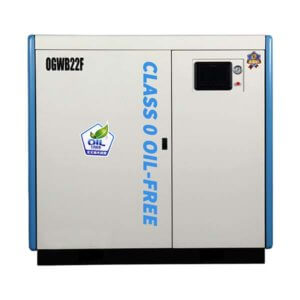Contents
Air leakage is a prevalent aspect of compressors. That leakage can greatly minimize the overall efficiency of the compressor. Facts and figures show that almost 30% of energy is wasted due to compressed air leakage. Thus, if you leave it unattended, the compressor will consume more power resulting in elevated expenditures.
Besides, leaks lower the system pressure that affects the efficient functionality of air tools. It also lessens the vitality of all equipment.
Problems associated with air leakage
Problems associated with air leakage
Compressed air leakage bestows the following difficulties in the operational activity of the system:
- Leaks result in fluctuations of pressure. This instability causes low efficiency of different tools of the compressor and affects the net output as well.
- You will have to pay more than expectations due to surplus compressor capacity
- Intensified run time and needless cycling drop service life and increase supervision of supply tools.
Types of air leakage
Types of air leakage
There are two types of leaks
- Planned leaks are manually built into the system mainly used in the production process. Mostly they are installed as a quick fix for output problems. Some planned leaks work as a cooler. We use them in cooling production tools.
Unplanned leaks are eternal sustenance issues that may occur in any part of the system. You have to detect these leaks and follow a repair program for fixing them.
Most common areas of leakage
Most common areas of leakage
Leakage can occur at any part of the compressor, however, here we will highlight the most common areas of leakage.
- Stockings, couplings, canals, and fittings are common leakage locales
- Pipe hookups can cause a problem if they are not properly welded.
- Improperly installed lubricators, controllers, and filters can also leak
- Nonexistent of O-rings that are required to seal
- Aged and badly retained equipment may have interior leaks
- Mis fastening Flanges
- Incompatibly pertained thread sealants
- Dull cylinder rod packing
- Material having low quality can also create a problem. Although initially, it is advantageous to limit the budget, poor quality will create long-term issues.
- Human errors are also responsible for air leaks.
Ways to recognize compressed air leakage
Ways to recognize compressed air leakage
You can’t visualize air leaks. So, you have to locate them by following some appropriate methods. You may detect leaks by listening to sounds produced by it. But, it is not as effective. However, this method could be effective if you fix audible leak detectors in compressed airlines.
One of the best ways to detect air leaks is using the ultrasonic acoustic detector. It can distinguish high notes of frequency that are produced due to the noise of leaks. Audio filters, directional microphones, and amplifiers are convenient units of ultrasonic acoustic detectors. Moreover, it owns visual indicators or earphones to inspect leaks.
Detection by this method is highly adaptive and versatile and can fit in various circumstances.
How does an ultrasonic acoustic detector work?
How does an ultrasonic acoustic detector work?
- Compressed air moves in a laminar flow while it is passing through the pipe. In laminar flow, all particles move in a parallel manner following a similar direction. On the other hand that laminar flow turns into turbulent flow in the leaking pipe. In turbulent flow, all particles don’t follow the same pattern and move in different directions.
- Turbulence arouses a cacophony that contains a wide spectrum of sounds varying from louder to faded frequencies. Sensors fixed in ultrasonic will concentrate on ultrasonic components in noise. As we know that wavelength varies inversely with frequency. Hence sound will be loudest at the leakage area because ultrasound is a short wave signal.
- You can listen to leaks even in a boisterous environment because ultrasonic detectors filter out the background noises.
This method is highly useful because it is easy to employ. It doesn’t take much time and is highly versatile in its actions. You can use it even when equipment is running. It gives a very precise and accurate description of the leak.
How to fix compressed air leakage?
How to fix compressed air leakage?
The pattern of repairing depends upon the complexity of leakage. Fastening of connections is a quick fix and very simple. It requires very little time and effort.
By this method, you can save thousands of dollars per year in electricity. However, you may have to go for a complicated way where you will replace faulty equipment like hoses, drains, joints, sections, piping, etc.
Choose high-quality hose, fittings, disconnect, and install them properly. One way to reduce air leaks is to lower the pressure differential across apertures. It will slow the flow rate and minimize the leakage rates.
It’s not very difficult to detect air leakage. Also, we have shared simple ways to fix it. Now, follow these guidelines for better results. Energy savings should be your priority. Keep checking for leaks regularly, so you can identify them instantly to avoid further loss. Follow a best-suited leak air program to maintain the effectiveness and efficiency of the air compressor.











Leave A Comment